Rules for installing and repairing a toilet cistern
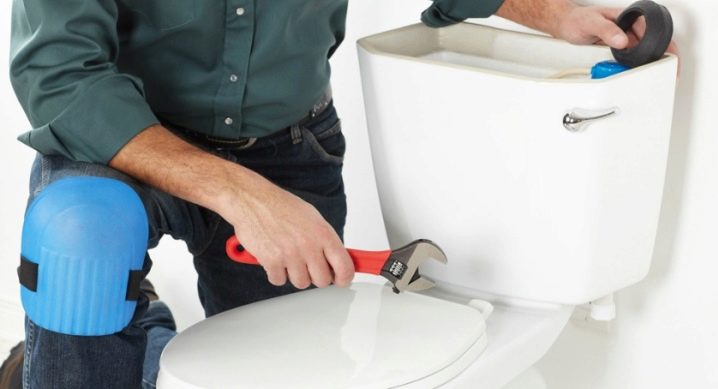
The cistern is a storage tank where liquid is collected in order to flush unnecessary substances from the toilet bowl into the sewer at the right time. The biggest problem with the toilet bowl is the breakdown of a device called a cistern.
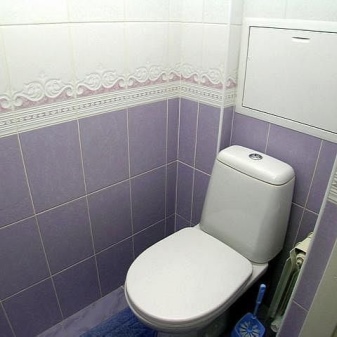
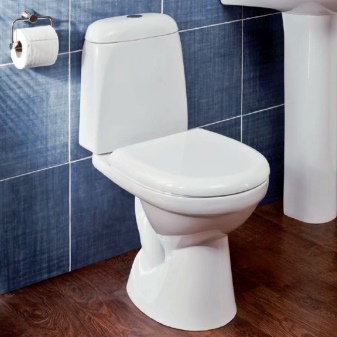
Toilet bowl structure
Typically, a toilet has two main parts: a cistern and a cistern. The latter has a device for draining water, it can be a button, rope or chain, pedal or lever. In the bowl itself, there is nothing special, except for the device of the partition from the bottom. It blocks the return path of sewage waste. This is due to a water vortex at the drain moment.

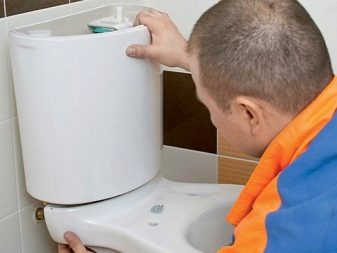
The hardest part is the inside of the tank. They are equipped with a float that falls when the water is drained. When it reaches the very bottom, the valve mechanism is triggered and the fluid drain is closed, it is recruited. To avoid overfilling the tank, there is also a valve on top, similar to the first. When water reaches it, it stops picking up.
The toilet cistern is designed so that it works well if it has the correct toilet inlet valve set. This is important enough for a cistern.

Mounting
To install the toilet, you need the necessary tools and equipment.
Equipment
Before you figure out how to install a cistern to the toilet, you need to acquire the necessary equipment. You need to choose it according to the following parameters:
By fastening the tank. Can be flush with a bowl, hung on the wall or installed hidden.
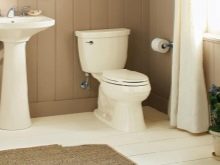
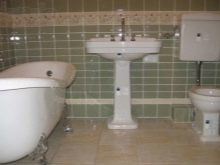

By supplying water to the tank. The inlet can be from the back, side or bottom. Lateral is the most common supply. The bottom liner allows you to neatly lining the pipe, but makes it difficult to install. The rear connection is almost never used.
By type of fittings. There is equipment with a lever, a button. The latter type is used most often, it helps to save water consumption.
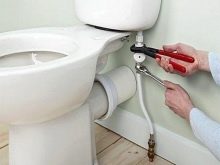
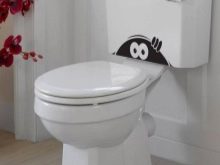
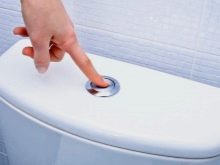
Also for installation you will need:
- locking mechanism - mounted on the water supply system, with the help of it you can shut off the water entering the tank from the general water supply network;
- eyeliner - connected to the inlet pipe, it can be steel, copper or rubber;
- drain mechanism - mounted inside the tank to regulate the drain and collection of water;
- sealing tape - used to seal joints.
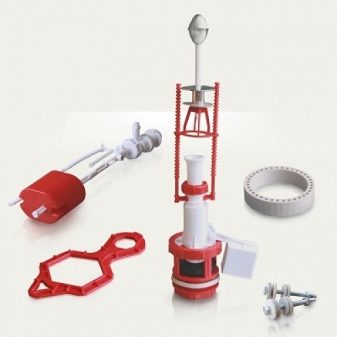
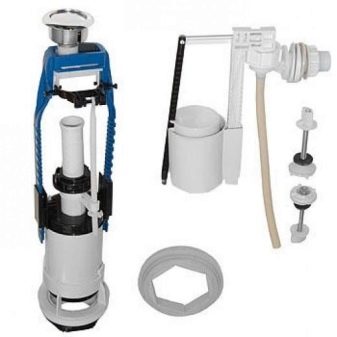
Instruments
- drill and drills (one for ceramics, the second for concrete);
- wrench for connecting the water supply;
- core, for drilling marks, to avoid sliding the drill along the plane;
- a rubber spatula to remove the remnants of the sealant;
- a pencil for marking.
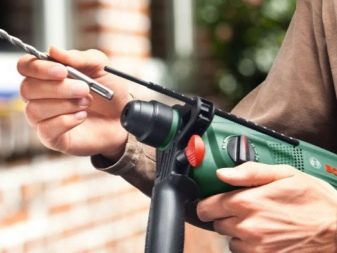
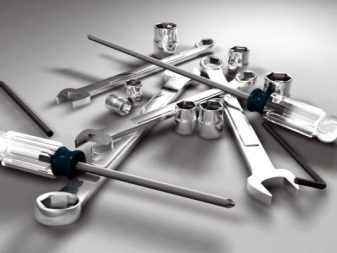
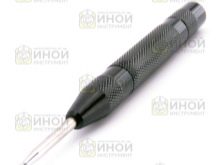
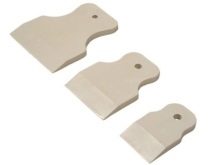

How to install?
Its installation depends on the type of equipment. There are three main ways:
The first way
The placement of a hinged tank is rarely used, but you still need to know about it.
Fasteners are made as follows:
- The drain pipe is attached to the bottom of the container to the hole provided for this.
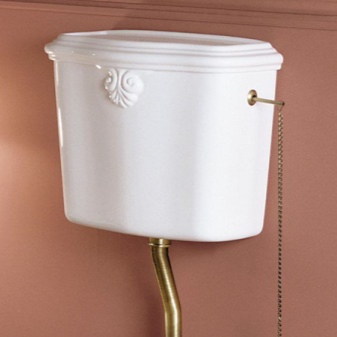
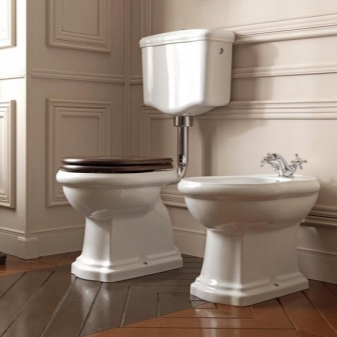
- Then the markup is done. The tank is positioned so that the lower part of the pipe is at the level of the inlet pipe of the toilet itself. After that, markings are made on the surface of the wall.
- Holes are drilled for the brackets. For this, it is better to use a puncher.Drills must be selected of the appropriate diameter, suitable for the size of the fastening bolts.
- Then install the brackets, and on them the water tank.
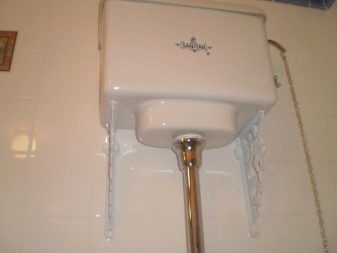
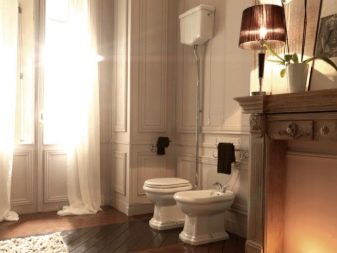
Second way
Here the tank is installed directly to the waste bowl.
A sealing gasket is installed on the toilet bowl. The adhesive applied to it will serve as its fixer. If there is no composition, you need to separately purchase a sealant and fix a gasket on it. It must be coated on both sides, since a tank will be installed on the second side.
To install the tank on the bowl, bolts with rubber cones for sealing are used. Having inserted them into the provided holes, it is necessary to tighten them from below with nuts, while they should not be overtightened, otherwise the breakage of ceramic products cannot be avoided.
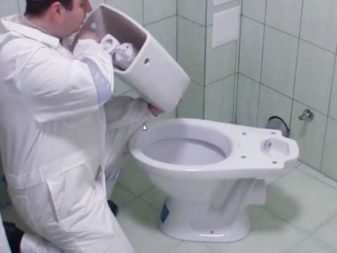
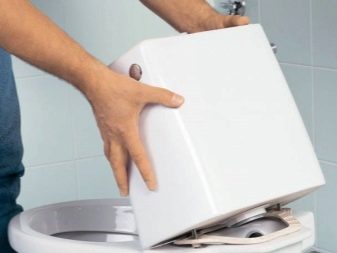
All other holes are plugged with special rubber plugs lubricated with sealant.
Further, all internal fittings are installed and water is supplied. But before that you need to make sure that all the seals are installed where necessary. A sealing tape is wound around the threaded parts.
The final step is to carry out a test: open the tap that turns off the water supply. Adjust the liquid level with a float. Before these works, let the sealant dry for two hours, and only then collect the water.
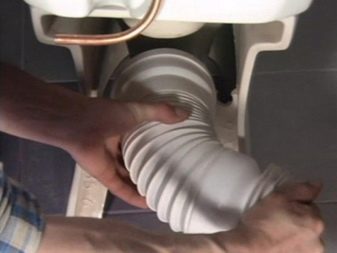
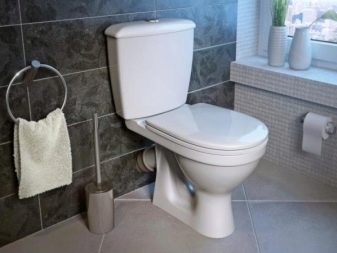
Third way
The hidden type of equipment greatly saves space in the restroom, and the structure is protected from damage.
This type differs from other models:
- their thick walls are made of durable materials;
- they are tall and wide in shape, so as not to make a deep niche in the wall;
- the drain button is located on the front of the tank.
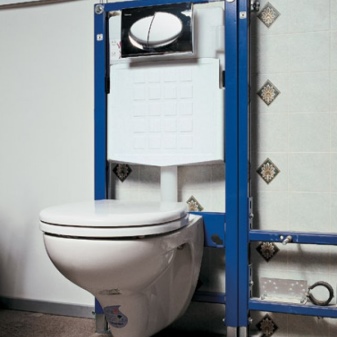
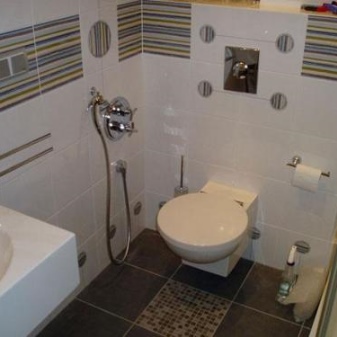
Installation is also carried out in a special way:
- A metal frame is mounted in a place prepared for installation, for fastening all equipment. In this case, it is necessary to accurately observe the horizontal and vertical level of the structure.
- The tank is mounted on the frame, and the water supply is connected. It is advisable to use reliable tubes for the supply. Since it will be difficult to carry out repair work after finishing.
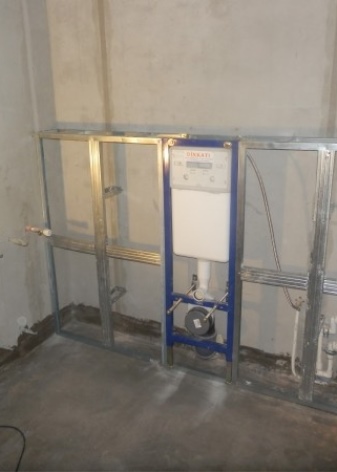
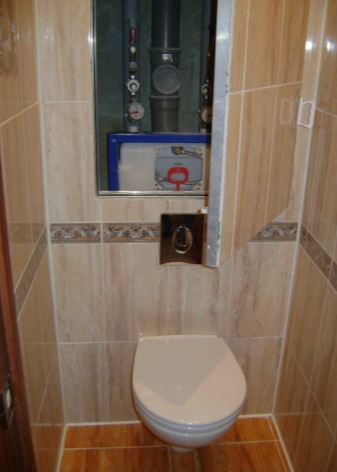
- Connect the inlet pipe through the locking mechanism.
- After starting work with the sewage system, the metal frame must be finished with waterproof plasterboard, and veneered with finishing material on top.
- Install the drain button. It is advisable to make a separate drain, which will help save water.
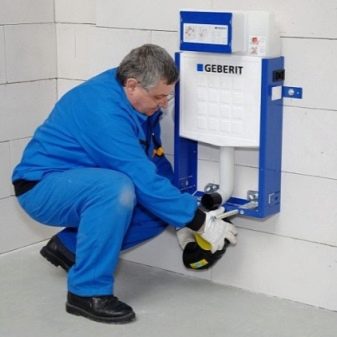
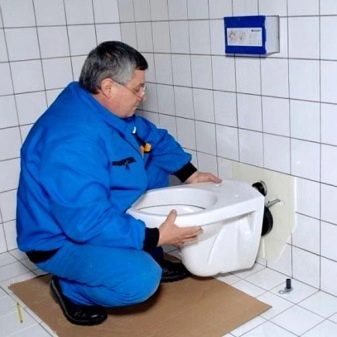
Renovation work
No matter how durable the structure of the toilet bowl, sooner or later, any one needs to be repaired. Basically, any part of the tank fittings fails. Often the rubber diaphragm wears out, resulting in a leak. In this case, it is necessary to dismantle the siphon and replace the worn part. If the diaphragm is clogged, you can simply clean it. In any case, it is necessary to turn off the water supply and remove the drain container.

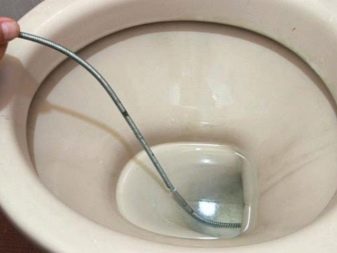
Incorrect liquid intake into the container may be due to the curved position of the float. To fix this, you need to open the reservoir lid and adjust this unit so that the seal fits snugly against the drain hole. There is nothing difficult in this and such an action does not require a special tool. It is only necessary to determine the correct location of the float by bending its attachment. It can be adjusted so that the drain will take place with an incomplete tank, thereby saving water.
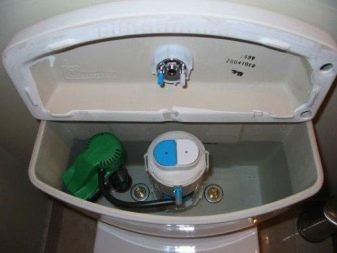
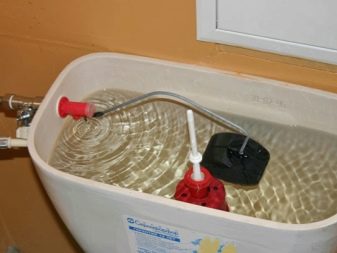
It turns out that any repair of the drain tank is associated with its disassembly and removal of the upper part of the drain tank. In order to remove the tank lid, you need to familiarize yourself with its design and understand the mechanism of its operation. Professional advice and repair instructions will also make troubleshooting work much easier. The principle of operation is the same for all models of toilet bowls, so it is enough to study one in order to avoid mistakes during repairs.

Open double tank
To open the top of an old-style toilet bowl, you first need to prepare the necessary devices for this.
The main list of them is as follows:
- tubular wrench;
- lever arm for the key, for strongly tightened fasteners;
- pliers;
- screwdriver.
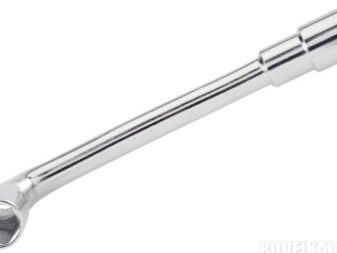
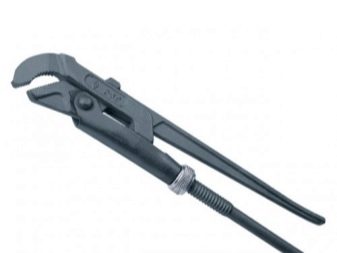
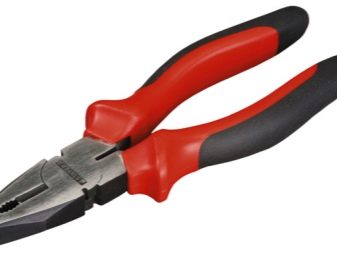

Experts advise to find the most illuminated place for repairs so that all the details are visible.
When unscrewing the nuts from the earthenware equipment, you need to be extremely careful not to damage the fragile case. Tighten the inlet valve in advance to prevent a flood. If the faucet is rusted, then it is better to seek help from professionals for replacement. Attempting to open the valve by yourself may damage it.
After making sure that the valve is closed, it is necessary to drain all the water from the tank. Now you can start removing the cover. There are varieties of toilet lid with one and two buttons, removing the top of the container of these types are slightly different from each other.
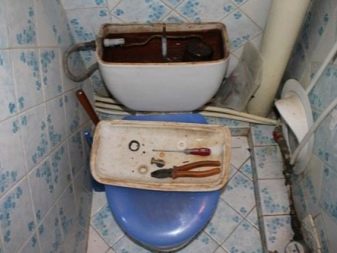
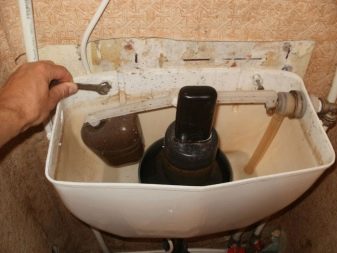
Take off
Before work, it is necessary to prepare all accessories and adapters, as well as other tools. At this point, the shelf must also be removed.
Before removing the top of the toilet on a one-button model, turn the ring around the flush button. If this fails, you can resort to using pliers, but do it through some kind of matter. To avoid scratching the ring. As soon as it moves, continue unscrewing it with your hands. This procedure must be performed in the opposite direction of the clockwise direction, otherwise the thread will tighten even more, or you can even tear it off. Having unscrewed, carefully so as not to damage the appearance of the container, the round element, you can start work on removing the top of the tank.
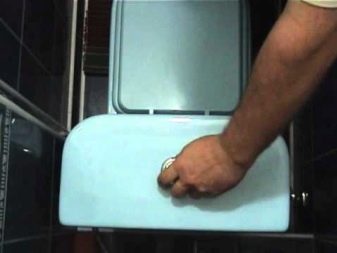

The mechanism is attached to the button with a special clamp with peculiar hooks on both sides. Therefore, you need to slightly raise and rotate the lid ninety degrees. This way you can get to the latches. Everything should be done carefully so as not to accidentally break anything.
Then, grasping both sides of the clothespin, unwind the mechanism, rotating in opposite directions. A special click will let you know that the fasteners are released and you can safely remove the top of the tank.
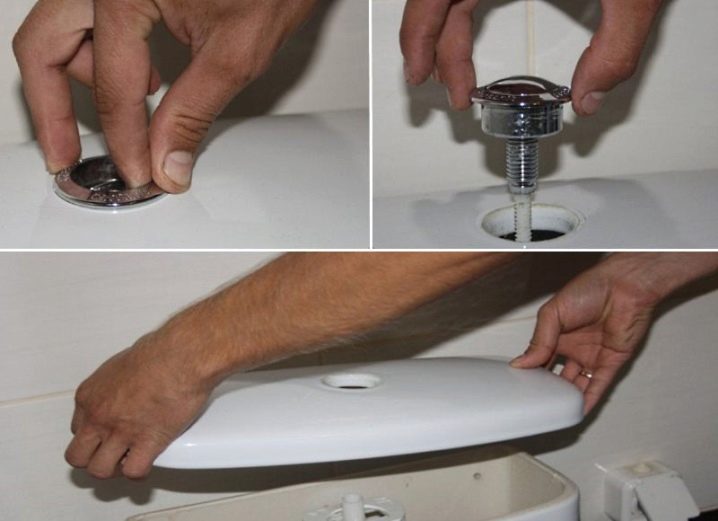
The cover on the model with two buttons can be removed using a different method. First you need to press one of the buttons. There is a small depression on the side surface of the other key. Catching on to it with a screwdriver, you can get the key case. Carry out the same procedure with the first button. There will be open access to the slotted mount, securing the cover. Carefully, without damaging the thread, you need to unscrew the screw.
As in the case of the one-button version, we rotate the upper part by ninety degrees. The clothespin is also unwound in the same way. After the characteristic sound, remove the cover.

Knowing how to remove the top of the toilet cistern can help you get started. You also need to remember that the described methods for removing the upper part of the tank are suitable for products with a side water supply. In other cases, it is necessary to carefully inspect the cover, it is possible the existence of auxiliary fasteners. If any, you need to dismantle them.
The fluid release system also has its own characteristics in various modifications. In some cases, it is unscrewed, and there are models where the upper part rises, there is a fixing screw inside.
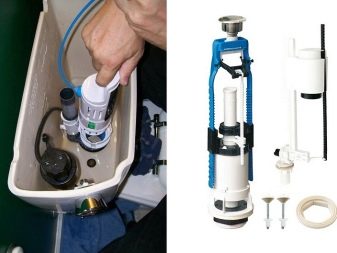
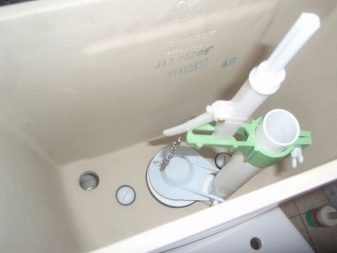
To repair some faults, it is not enough to simply remove the cover. If there is a need to dismantle the valve for supplying liquid to the container, you need to provide access to it. To do this, you need to unscrew the nuts securing it, they are located on the fluid supply tube. On many models, it fits on the side of the tank. This can be done using a tubular wrench and pliers.
The drain assembly can be removed by carefully unscrewing it. Since most of the elements of the tank are plastic, you should not apply great force when working with them.Having unscrewed the assembly, it is necessary to remove it and remove the seals that fix the mechanism to the container.
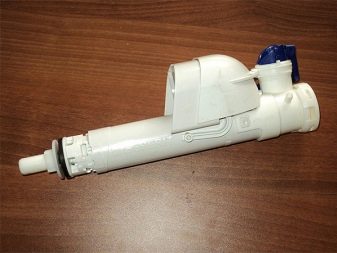
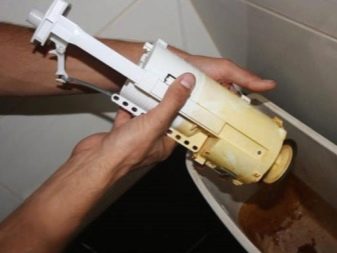
If there is a need to remove the tank completely, you need to unscrew it from the drain bowl and remove the rubber seal.
One of the most common malfunctions is the constant filling of the reservoir, as well as the leakage of liquid from it into the drain bowl. The continuous flow of fluid can be for several reasons. Wrong position of the float, it just needs to be adjusted a little. Or maybe the reason lies in the locking device, which, in the event of a malfunction, allows water to enter the float. This problem must be corrected by replacing the shut-off valve. Drain all filling from the container, then unscrew the union connecting the valve and the water supply. After that, it is necessary to disconnect the float mount and unscrew the fixing nuts, get the faulty one and install a new valve. Put everything in its place correctly.

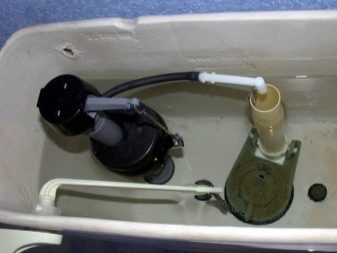
A leaky float can also cause this problem, in which case it must be replaced. Temporarily, you can put a water-proof bag on it or solder the damaged area. But this method will not provide long-term work, therefore it is used in cases where the necessary part is not at hand. To replace the float, unscrew the fluid supply hose with a wrench and remove the damaged element. After that, you can install a new part by repeating all the previous steps in reverse order.
In many cases, wear and tear of the float diaphragm can be the reason for regular water drainage. To replace it, you need to fix the float lever to something and drain all the liquid. Then unscrew the drain pipe nut and disconnect the siphon. Then the membrane changes.
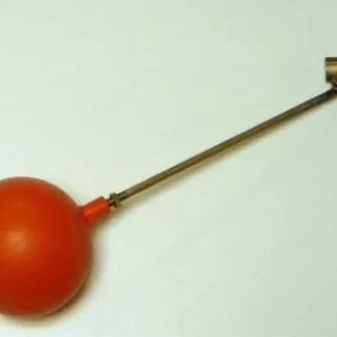
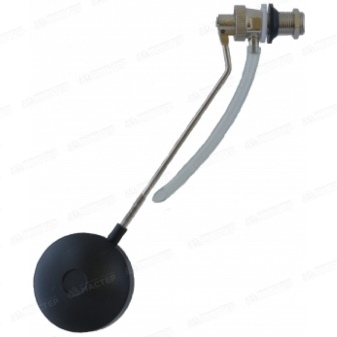
It happens that the tank leaks at the point where it is attached to the toilet bowl. To eliminate this malfunction, it is necessary to tighten the mounting bolts. But this must be done carefully, as overtightened bolts can cause cracks in the equipment. The cuff located at the attachment point must be coated with sealant.
The most annoying malfunction is a loud noise during fluid intake into the reservoir. This can be remedied in two ways. A special tube can be installed on the float valve to dampen the noise. It is mounted vertically on the mechanism so that its lower part is above the liquid level, and the upper one is below it. Such a simple device allows you to reduce the noise of the intake water. Another way to combat the annoying sound is to install a stabilizing valve in place of the normal version.

Hinged
To repair the hinged drain tank, the first step is to dismantle it. To do this, you need to unscrew the supply hose, before that shutting off the fluid supply valve. Then disconnect the drain pipe from the bottom of the tank. Carefully remove the tank from the brackets and locate it in a place convenient for repairs. Further, all the necessary actions are taken to remove the upper part of the container and inspect the fittings, the causes of the breakdown are found out.
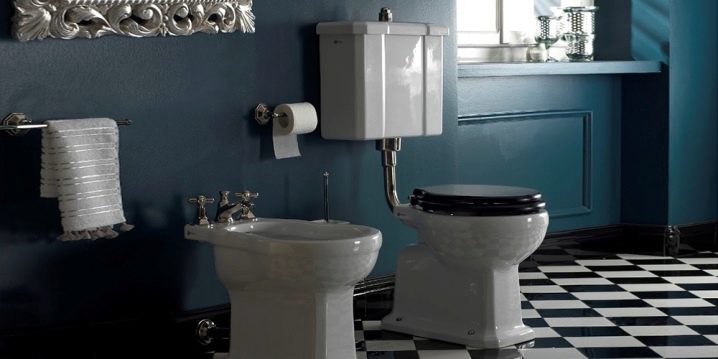
Hidden
This type of equipment is the most difficult to dismantle. Here you will have to disassemble the made wall cladding that hides the product. As in the first case, unscrew the supply and drain pipelines. Then disconnect the equipment from the frame on which it is installed. The final step is to remove the container from the niche, identify the malfunction and fix it.
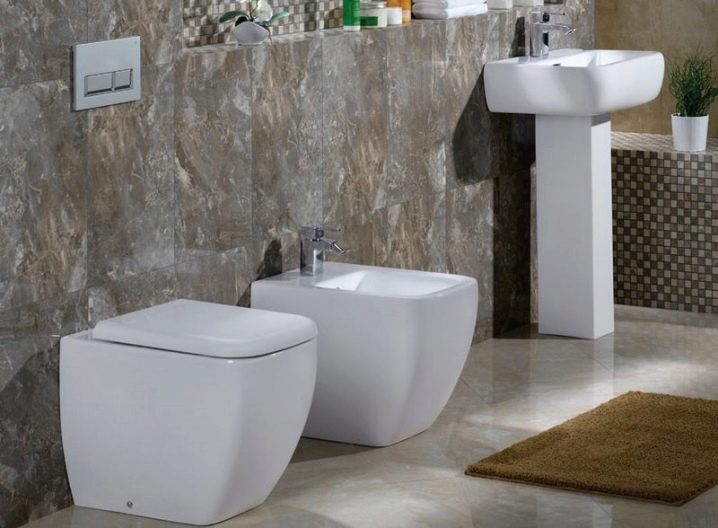
Built in
This equipment lends itself best to dismantling, as it is installed directly on the waste can. It is enough to block the water access, disconnect the supply hose and unscrew the fastening bolts. After that, you need to remove the seal between the drain vessel and the tank. Next, repair work should be carried out.
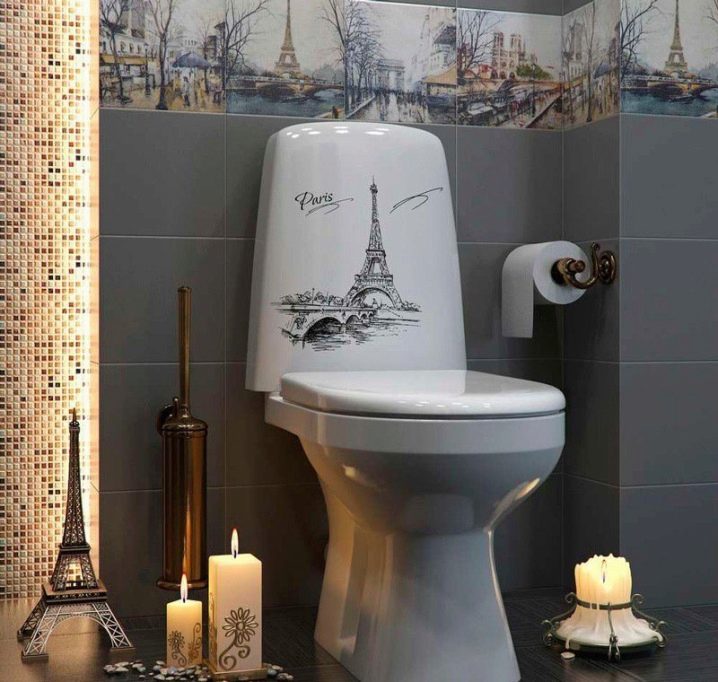
Useful Tips
Taking into account the materials from which all the equipment is made, work must be done with special care. This is especially true for parts made of ceramics and plastics.Any careless action can lead to malfunction or loss of appearance of the product. The filler part of the tank must be protected from any damage in order to prolong its life.
It must be remembered that you need to purchase the cover only in conjunction with the tank. Having damaged one of the parts, you will have to purchase a completely new kit.

All the work performed is simple, but it is still recommended to memorize or write down their sequence. After all, disassembling devices is always easier than assembling. It is recommended to maintain order during repairs so as not to get tangled in spare parts, not to damage or lose them.
Before proceeding with the repair, you yourself should understand the device of the required mechanism. Do not forget to shut off the water supply when performing any operations with the equipment. It is recommended that when assembling the equipment, coat all seals with sealant, and wrap the threaded connections with FUM tape. Careful and diligent care of the plumbing fixture will ensure the durability of this product and its attractive appearance.
Repair of the toilet cistern, replacement and installation of the filler valve are shown in the following video.













The comment was sent successfully.